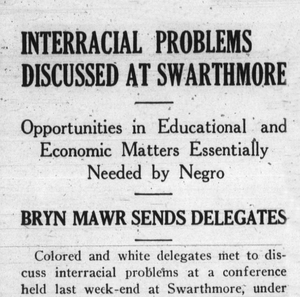Interracial Problems Discussed at Swarthmore
Dublin Core
Title
Subject
education
Description
Source
Publisher
Date
Contributor
Rights
Language
Type
Identifier
Coverage
1924
Text Item Type Metadata
Text
INTERRACIAL PROBLEMS DISCUSSED AT SWARTHMORE
Opportunities in Educational and Economic Matters Essentially Needed by Negro
BRYN MAWR SENDS DELEGATES
Colored and white delegates met to discuss interracial problems at a conference held last week-end at Swarthmore, under the auspices of the Bryn Mawr Liberal Club, the Swarthmore Polity Club, and the University of Pennsylvania Forum. Other colleges represented were Haverford, Virginia Normal and Industrial, Hampton, Lincoln, City College of New York, Union Theological and West Virginia Collegiate Institute. Attending from Bryn Mawr were: E. Briggs ’24, F. Begg ’24, M. Rodney ’24, P. Fansler ’24, R. Murray ’24, F. Briggs ’25, H. D. Potts ’25, E. Baldwin 25 [sic], H. Hermann ’25, D. O’Shea ’26, H. Hopkinson ’26.
The problem was approached through the historical background of the negro and his present social status. As regards any contact with the white race the negro, with a few exceptions, such as DuBois [sic], has no standing at all.
Discrimination against negroes exists in varying degrees throughout the different states, ranging from discrimination in the use of tram cars and restaurants to discrimination at the polls and education. Segregation, especially in the matter of schools, was generally acknowledged not necessarily to mean discrimination. It only became such when the negro was forced to attend decidedly inferior schools. Educational facilities for the negro, however are improving throughout the South, according to Mr. H. Brown, of Hampton University, though they are still far from good. In South Carolina, for example, for every eighty dollars spend on the education of a white, seven are spent on that of a negro. For the South the problem does not hinge around the question of separate schools, but around the necessity of obtaining well-equipped colored schools.
Discrimination in matters of education the Conference felt, should be made on the basis of intelligence and not of color. Delegates from colleges where there both white and black students felt that the contact obtained in this way lead [sic] to mutual understanding and esteem.
Mr. E. Corbie, of City College, New York, felt that the negro had a very definite contribution to make as a race, and that its identity should not be lost. The only way in which the colored race can maintain its identity, he declared, is in having knowledge of itself and of its contribution to the world from the time of Hiram to that of Hannibal the Phoenician and of Egyptian civilizations; even to the time when the cotton seed was brought to America.
What the negro race needs more than anything else, according to the colored delegates, is opportunity in all fields of life but especially in education. Present prejudice can never be overcome unless the negro is given the opportunity of self-development; unless black and white can meet to discuss common problems of national and international importance; unless journalism, writing and teaching cease to foster prejudice by emphasizing the bad qualities and passing lightly over any attainments of the race.
The question of amalgamation, it was generally felt, was a minor issue and one that would settle itself along natural lines.


